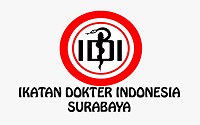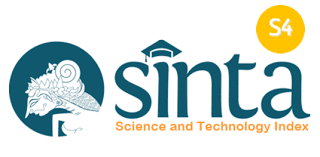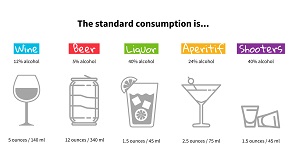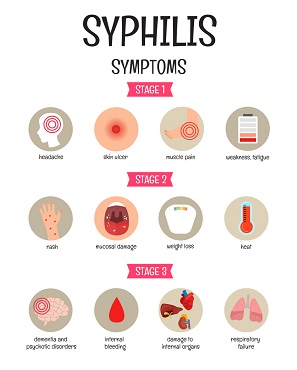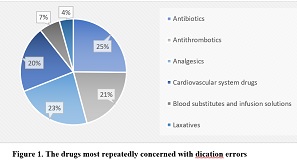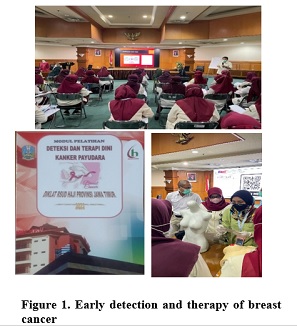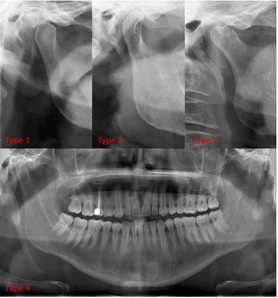Delayed Admission in Neonatal Cholestasis

Delayed diagnosis of cholestasis in neonates remains a problem. Cholestatic jaundice is a pathological condition that requires immediate treatment, such as biliary atresia. This study aims to analyze the characteristics of infants with cholestasis who seek treatment at a tertiary hospital. This study was a cross-sectional study to determine the characteristics of infants with cholestasis treated at the tertiary hospital at Dr. Soetomo General Academic Hospital, Surabaya, East Java, Indonesia. Subjects were collected using medical records using the consecutive method from 2019 to 2021. The inclusion criteria in this study were infants aged >2 weeks who suffered from cholestasis. The age of the 111 infants with cholestasis involved was 4.8 ± 2.9 months old. A total of 27 (24.3%) infants visited the hospital at the age of <2 months, 36 (32.4%) at the age of 2-4 months, but most of them, consisting of 48 (43.2%) infants, came to the hospital at the age of >4 months. Jaundice was present at birth in 23 infants (20.7%), and most infants had jaundice at 1 month of age in 75 infants (67.6%). Most of the infants (75 infants) had jaundice at the age of 1 month but visited the hospital at the age of >4 months. This showed that the late diagnosis of cholestasis in infants was still quite high. This study supports education for early detection of cholestasis in primary healthcare medical personnel, community health workers, and parents.
INTRODUCTION
Jaundice is a yellow discoloration of the skin and sclera. More than 80% of jaundice that occurs in newborns in the first two weeks is due to direct hyperbilirubinemia and resolves spontaneously. However, if jaundice persists beyond two weeks of age, it could be due to cholestasis or hepato-biliary dysfunction11. It can occur in 1 in 2500 births, and it is very important to distinguish between cholestasis and non-cholestatic (physiological jaundice). Cholestatic jaundice is a pathological condition that requires immediate treatment, such as biliary atresia (25-40% of cases)22. However, experienced physicians have a better understanding of the management of early neonatal jaundice (49%) than prolonged neonatal jaundice (16%)33.
The recommendations suggest that infants who develop jaundice after the 14th day of life should have their total and direct serum bilirubin levels checked to evaluate for cholestasis. The infant should be referred to a hepatology for further evaluation if the direct bilirubin level is elevated >1.0mg/dL or >17 mmol/L2. The success of treatment depends on the time of diagnosis. The younger the infant is treated, the better the prognosis. However, delay in diagnosis remains a problem. This study aims to analyze the characteristics of infants with cholestasis treated at the tertiary hospital at Dr. Soetomo General Academic Hospital, Surabaya, Indonesia.
MATERIALS AND METHODS
This study was a cross-sectional, retrospective study to determine the characteristics of infants with cholestasis treated at the tertiary hospital at Dr. Soetomo General Academic Hospital, Surabaya, Indonesia. Subjects were collected using the consecutive method in 2019-2021 using medical records. The inclusion criteria in this study were infants aged >2 weeks with cholestasis. Serum bilirubin measurement establishes the diagnosis of cholestasis. Cholestasis is an increase in the direct bilirubin level of >1 mg/dL (if the total bilirubin level is <5 mg/dL) or >20% of the total bilirubin (if the total bilirubin level is >5 mg/dL11. Exclusion criteria in this study were the presence of congenital abnormalities and syndromes. This study was conducted after obtaining approval from the ethics committee of Dr. Soetomo General Academic Hospital, Surabaya, Indonesia (No. 0635/LOE/301.4.2/X/2021) on October 8th, 2021.
RESULTS
In this study, there were 111 infants with cholestasis, consisting of 71 (64%) males and 40 (36%) females, aged 4.8 ± 2,9 months old. They suffered from extrahepatic cholestasis based on histopathological examination with a direct bilirubin level of 9.53±5.18 mg/dL and a total bilirubin level of 15.42 ± 10.99 mg/dL. A total of 27 (24.3%) infants visited the hospital at the age of <2 months, 36 (32.4%) at the age of 2-4 months, but most of the 48 (43.2%) infants came to the hospital at the age of >4 months. Most infants seek treatment at a late age (Table 1).
The onset of jaundice was present at birth in 23 infants (20.7%) and 75 (67.6%) infants had jaundice at 1 month of age. A total of 86 (77.5%) infants had a normal birth weight. Changes in stool color in acholic stool before 1 month of age were found in most of the infants (86 infants or 77.5%). However, most of the other symptoms have not been complained of, such as abdominal distension, which was only found in 28 infants (25.2%), decreased appetite in 22 infants (19.8%), and gastrointestinal symptoms in 31 (27.9%) (Table 1).
| Variable | n(%) |
|---|---|
| Sex | |
| Male | 71 (64%) |
| Female | 40 (36%) |
| Birth Weight | |
| <2500 gram | 25 (22.5%) |
| ≥2500 gram | 86 (77.5%) |
| Onset of Jaundice | |
| Since Birth | 23 (20.7%) |
| ≤ 1 month old | 75 (67.6%) |
| > 1 Month | 13 (11.7%) |
| First time to visit gastrohepatologist | |
| < 2 months old | 27 (24.3%) |
2-4 months old | 36 (32.4%) |
| >4 months old | 48 (43.2%) |
| Liver biopsy | |
| Extrahepatic | 111 (100%) |
| Cholestasis Intrahepatic cholestasis | 0 (0%) |
| Stool color < 1 month of age | |
| Acholic | 86 (77.5%) |
| Non-Acholic | 25 (22.5%) |
| Abdominal distended (bloating) | |
| Yes | 28 (25.2%) |
| No | 83 (74.8%) |
| Decreased of appetite | |
| Yes | 22 (19.8%) |
| No | 89 (80.2%) |
| Gastrointestinal symptoms | |
| Yes | 31 (27.9%) |
| No | 80 (72.1%) |
| Hepatomegaly | |
| Yes | 93 (83.8%) |
| No | 18 (16.2%) |
| Splenomegaly | |
| Yes | 22 (19.8%) |
| No | 89 (80.2%) |
Serum Bilirubin level | Mean ± SD |
Direct bilirubin (mg/dL) | 9.53±5.18 |
Total bilirubin (mg/dL) | 15.42 ± 10.99 |
Table 2 shows that most of the infants (48 infants) developed jaundice at 1 month of age but were referred to hepatology at >4 months of age. Only a few infants sought treatment at an early age.
| Onset of jaundice | |||
|---|---|---|---|
Since birth | ≤ 1 month old | >1 month old | |
<2-month-old | 2 | 24 | 1 |
2-4 months old | 10 | 23 | 3 |
>4-month-old | 23 | 12 | 13 |
Discussion
The primary cause of cholestasis in infants is biliary atresia. Histopathologic examination of the liver reveals extrahepatic cholestasis22. Previous studies have been carried out to analyze direct bilirubin levels for early detection of biliary atresia. Biliary atresia screening using direct bilirubin levels in early life has a sensitivity of 100% and a specificity of 99.9%44. Therefore, it is recommended to evaluate serum bilirubin levels in infants with prolonged jaundice. Immediate referral to hepatology is necessary if the direct serum bilirubin level is >1 mg/dL to prevent delay in diagnosis and management of biliary atresia22.
Cholestasis can be caused by conditions, including infection, disorders of the immune system, genetic, metabolic, or unknown etiology2,525. However, previous studies have shown that
Feldman AG, Sokol RJ. Neonatal cholestasis. Neoreviews. 2013;14(2). DOI: 10.1542/neo.14-2-e63
Fawaz R, Baumann U, Ekong U, Fischler B, Hadzic N, Mack CL, et al. Guideline for the evaluation of cholestatic jaundice in infants: Joint recommendations of the North American society for pediatric gastroenterology, hepatology, and nutrition and the European society for pediatric gastroenterology, hepatology, and nutriti. J Pediatr Gastroenterol Nutr. 2017;64(1):154–68. DOI: 10.1097/MPG.0000000000001334
Palermo JJ, Joerger S, Turmelle Y, Putnam P, Garbutt J. Neonatal cholestasis: Opportunities to increase early detection. Acad Pediatr [Internet]. 2012;12(4):283–7. Available from: DOI: 10.1016/j.acap.2012.03.021
Harpavat S, Garcia-Prats JA, Anaya C, Brandt ML, Lupo PJ, Finegold MJ, et al. Diagnostic Yield of Newborn Screening for Biliary Atresia Using Direct or Conjugated Bilirubin Measurements. JAMA - J Am Med Assoc. 2020;323(12):1141–50. DOI: 10.1001/jama.2020.0837
Karpen SJ. Pediatric Cholestasis: Epidemiology, Genetics, Diagnosis, and Current Management. Clin Liver Dis. 2020;15(3):119–115. DOI: 10.1002/cld.895
Sundaram SS, Mack CL, Feldman AG, et al. Biliary atresia: Indications and timing of liver transplantation and optimization of pretransplant care. Liver Transpl 2017; 23: 96–109. DOI: 10.1002/lt.24640
Bezerra JA, Wells RG, Mack CL, Karpen SJ, Hoofnagle JH, Doo E, et al. Biliary Atresia: Clinical and Research Challenges for the Twenty-First Century. Hepatology. 2018;68(3):1163–73. DOI: 10.1002/hep.29905
Sokol RJ, Shepherd RW, Superina R, Bezerra JA, Robuck P, Hoofnagle JH. Screening and outcomes in biliary atresia: Summary of a national institutes of health workshop. Hepatology. 2007;46(2):566–81. DOI: 10.1002/hep.21790
Voeks JH, Ph D, Howard VJ, Ph D. Stenting versus Surgery for Carotid Stenosis. N Engl J Med. 2016;375(6):601–5. DOI: 10.1056/NEJMc1601230
Nio M, Wada M, Sasaki H, Tanaka H, Watanabe T. Long-term outcomes of biliary atresia with splenic malformation. J Pediatr Surg [Internet]. 2015;50(12):2124–7. Available from: DOI: 10.1016/j.jpedsurg.2015.08.040
Aldeiri B, Giamouris V, Pushparajah K, Miller O, Baker A, Davenport M. Cardiac-associated biliary atresia (CABA): A prognostic subgroup. Arch Dis Child. 2021;106(1):68–72. DOI: 10.1136/archdischild-2020-319122
Serinet MO, Wildhaber BE, Broué P, Lachaux A, Sarles J, Jacquemin E, et al. Impact of age at Kasai operation on its results in late childhood and adolescence: A rational basis for biliary atresia screening. Pediatrics. 2009;123(5):1280–6. DOI: 10.1542/peds.2008-1949
Petersen C, Davenport M. Aetiology of biliary atresia: What is actually known? Orphanet J Rare Dis. 2013;8(1):1–13. DOI: 10.1186/1750-1172-8-128
Bessho K, Bezerra JA. Biliary Atresia: Will blocking inflammation tame the disease? Annu Rev Med. 2011;62:171–85. DOI: 10.1146/annurev-med-042909-093734
Noorulla F, Dedon R, Maisels MJ. Association of Early Direct Bilirubin Levels and Biliary Atresia among Neonates. JAMA Netw Open. 2019;2(10):3–5. DOI: 10.1001/jamanetworkopen.2019.13321
Fontenele JPU, Schenka AA, Hessel G, Jarry VM, Escanhoela CAF. Clinical and pathological challenges in the diagnosis of late-onset biliary atresia: Four case studies. Brazilian J Med Biol Res. 2016;49(3):10–3. DOI: 10.1590/1414-431X20154808
Schwarz KB, Haber BH, Rosenthal P, Mack CL, Moore J, Bove K, et al. Extrahepatic anomalies in infants with biliary atresia: Results of a Large prospective North American multicenter study. Hepatology. 2013;58(5):1724–31. DOI: 10.1002/hep.26512
Jimenez-Rivera C, Jolin-Dahel KS, Fortinsky KJ, Gozdyra P, Benchimol EI. International incidence and outcomes of biliary atresia. J Pediatr Gastroenterol Nutr. 2013;56(4):344–54. DOI: 10.1097/MPG.0b013e318282a913
Schreiber RA, Barker CC, Roberts EA, Martin SR, Alvarez F, Smith L, et al. Biliary Atresia: The Canadian Experience. J Pediatr. 2007;151(6):659–66. DOI: 10.1016/j.jpeds.2007.05.051
Ng VL, Sorensen LG, Alonso EM, Fredericks EM, Ye W, Moore J, et al. Neurodevelopmental Outcome of Young Children with Biliary Atresia and Native Liver: Results from the ChiLDReN Study. J Pediatr. 2018;196:139-147.e3. DOI: 10.1016/j.jpeds.2017.12.048
Wang KS. Newborn screening for biliary atresia. Pediatrics. 2015;136(6):e1663–9. DOI: 10.1542/peds.2015-3570
Louis Couturier. Chatherin Jarvis. Helene Rousseau. Vania. Case Report Biliary atresia. 2015;61:965–8. Available from: https://www.cfp.ca/content/61/11/965.long
van der Schyff F, Terblanche AJ, Botha JF. Improving Poor Outcomes of Children With Biliary Atresia in South Africa by Early Referral to Centralized Units. JPGN Reports. 2021;2(2):e073. DOI: 10.1097/PG9.0000000000000073
Wu B, Zhou Y, Tian X, Cai W, Xiao Y. Diagnostic values of plasma matrix metalloproteinase-7, interleukin-8, and gamma-glutamyl transferase in biliary atresia. Eur J Pediatr. 2022;181(11):3945–53. DOI: 10.1007/s00431-022-04612-7
Setyoboedi B, Rofii A, Endaryanto A, Arief S. Expression of cytokeratin-7 and cytokeratin-19 on newborn mice induced rhesus rotavirus as biliary atresia model. Pan Afr Med J. 2022;42:322. DOI: 10.11604/pamj.2022.42.322.28408
Copyright (c) 2024 Bagus Setyoboedi, Rendi Aji Prihaningtyas, Anindya Kusuma Winahyu, Sjamsul Arief

This work is licensed under a Creative Commons Attribution-ShareAlike 4.0 International License.
- The journal allows the author to hold the copyright of the article without restrictions.
- The journal allows the author(s) to retain publishing rights without restrictions.
- The legal formal aspect of journal publication accessibility refers to Creative Commons Attribution Share-Alike (CC BY-SA).
- The Creative Commons Attribution Share-Alike (CC BY-SA) license allows re-distribution and re-use of a licensed work on the conditions that the creator is appropriately credited and that any derivative work is made available under "the same, similar or a compatible license”. Other than the conditions mentioned above, the editorial board is not responsible for copyright violation.






